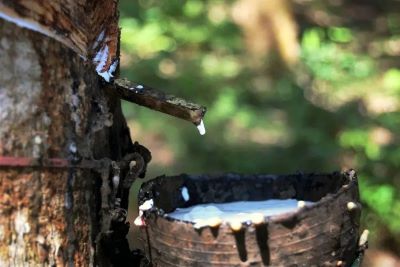
Rubber production in Northeast India is experiencing a historic surge. Once a marginal contributor, the region now plays a key role in the nation's rubber supply chain. In the past decade, its share has more than doubled, transforming the economy of several northeastern states.
In 2013-14, these states accounted for just 7.8% of India's rubber output. By 2023-24, their combined share had climbed to 17.5%. This leap signals not only agricultural progress but also industrial promise, particularly in states like Tripura, Assam, and Meghalaya.
Tripura has become a major hub for rubber production in Northeast India, now ranking second only to Kerala nationwide. Over 97,000 hectares are under rubber cultivation in the state. Public sector corporations like TFDPC and TRPC are actively supporting plantations and local farmers.
The state is also scaling up industrial efforts. A second rubber park is under development in Santirbazar, aimed at boosting exports and attracting investment in rubber based manufacturing. Products such as furniture and footwear are expected to benefit from this expansion.
Assam, with its vast land and growing infrastructure, is quickly becoming a rubber growing powerhouse. The state has benefited from the INROAD project, a nationwide initiative targeting large scale rubber cultivation. Assam alone is set to develop 100,000 hectares for rubber under this program.
In Meghalaya, rubber farming is gaining ground despite smaller land availability. The state's participation in the INROAD project helps promote skill development and farming innovation, boosting rural livelihoods in the process.
A key driver of rubber production in Northeast India is the Indian Natural Rubber Operations for Assisted Development (INROAD) project. Launched by the Rubber Board and the Automotive Tyre Manufacturers Association (ATMA), this public-private initiative is targeting 200,000 hectares of new plantations over 8-10 years.
The project is backed by significant investment. ATMA has committed Rs. 1,000 crore to support new plantations and an additional Rs. 100 crore for training and quality enhancement. This not only accelerates rubber cultivation but also strengthens the region's integration with India's tyre and manufacturing industries.
This growth wave is reshaping local economies. Thousands of small farmers now earn steady income through rubber tapping. Processing units and new rubber parks bring in job opportunities and industrial output.
Tripura's strategic position enhances export logistics. Projects like the Maitri Setu and the Agartala-Akhaura railway line are boosting trade connectivity with Southeast Asia. Rubber-based products made in Tripura are now reaching markets far beyond India.
The future of rubber production in Northeast India looks bright. With government support, private investment, and farmer participation, the region is poised to become a national leader. As Tripura, Assam, and Meghalaya continue expanding cultivation and processing capacity, their contributions to India's economy will only grow.